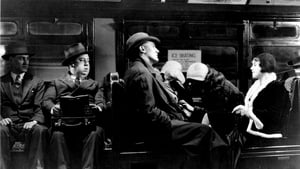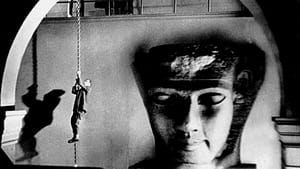Contact: info@alwanfilm.com
Video Sources 0 Views
- Watch trailer
- Blackmail


Synopsis
Table of Contents
ToggleReview: Blackmail 1929 Colorized – A Landmark Thriller Resurrected in Vibrant Color

Introduction
Blackmail 1929 stands as a pioneering achievement in the realm of thriller cinema, heralding a new era of suspense and intrigue on the silver screen. In this article, we’ll delve into the significance of this early colored film, exploring its impact on audiences and its enduring legacy in the annals of cinematic history.
Check The Full Colorized Movies List
Check Our Colorized Movies Trailer Channel
Understanding Blackmail 1929 Colorized: Director, Cast, and Genre
Directed by the legendary Alfred Hitchcock, Blackmail 1929 showcases his early mastery of suspense and visual storytelling. The film features a talented cast, including Anny Ondra and John Longden, whose performances elevate the tension and drama to new heights. Blending elements of crime, mystery, and psychological thriller, “Blackmail” (1929) immerses viewers in a world of deception and danger, where the line between right and wrong is blurred and the consequences of one’s actions are ever-present.
Exploring the World of Blackmail 1929 Colorized: Plot and Characters
At its core, Blackmail 1929 follows the harrowing journey of a young woman, portrayed by Anny Ondra, whose life is turned upside down when she becomes embroiled in a deadly game of cat and mouse with a cunning blackmailer. As she grapples with guilt and fear, she must navigate a treacherous world of secrets and lies, where betrayal lurks around every corner and redemption seems like an impossible dream. Along the way, she encounters a cast of intriguing characters who challenge her perceptions and test her resolve, leading to a thrilling climax that will keep audiences on the edge of their seats until the very end.
The Art of Film Colorization
Film colorization serves as a transformative tool that breathes new life into classic movies, allowing audiences to experience familiar stories in a fresh and exciting way. By digitally adding color to black and white films, colorization opens up new possibilities for storytelling and visual expression, enriching the viewing experience and inviting audiences to see beloved classics in a whole new light.
Early Colored Films: A Brief History
The history of colored films stretches back to the earliest days of cinema, with filmmakers experimenting with various techniques to add color to their creations. From hand-tinted frames to early Technicolor processes, the evolution of colored film has been marked by innovation and ingenuity, paving the way for the development of modern colorization techniques that continue to captivate audiences to this day.
Blackmail 1929 and Its Early Colored Version
The decision to release Blackmail 1929 in a colorized format was met with both excitement and skepticism. While some welcomed the opportunity to experience the film in vibrant color, others expressed concerns about the potential impact on its visual aesthetic. Nevertheless, the early colored version of Blackmail 1929 offers viewers a fresh perspective on Hitchcock’s masterful thriller, enhancing its atmospheric qualities and immersing audiences in its dark and moody world.
The Debate Over Film Colorization
The debate over film colorization continues to rage on, with proponents praising its ability to breathe new life into classic movies and introduce them to a new generation of viewers, while detractors argue that it compromises the artistic integrity of the original work and diminishes its historical significance. As filmmakers and audiences grapple with the implications of colorization, the debate shows no signs of abating, leaving us to ponder the merits and drawbacks of this controversial practice.
Examining Blackmail 1929 as an Early Colored Film
As with any colorized classic, the impact of colorization on Blackmail 1929 is a matter of personal interpretation. Some may argue that it enhances the film’s visual appeal and immerses viewers in its world, while others may feel that it detracts from the stark beauty of the original black and white version. Regardless of one’s stance on the issue, there’s no denying the enduring power of “Blackmail” (1929) as a groundbreaking thriller that continues to captivate audiences with its suspenseful plot and unforgettable characters.
Influence and Legacy: Blackmail 1929 Colorized’s Impact on Cinema
Blackmail 1929 has left an indelible mark on the world of cinema, inspiring countless filmmakers and captivating audiences with its groundbreaking approach to storytelling. From its innovative use of suspense to its unforgettable set pieces, the film has set the standard for thrillers for generations to come, solidifying its status as a true classic of the genre.
Director’s Cinematic Legacy: BeyondBlackmail 1929 Colorized
Alfred Hitchcock’s influence extends far beyond “Blackmail” (1929), with a diverse body of work that continues to captivate audiences around the globe. From “Psycho” to “Vertigo,” Hitchcock’s films are celebrated for their masterful storytelling, impeccable craftsmanship, and enduring appeal, solidifying his legacy as one of the greatest directors in cinematic history. Through his groundbreaking work, Hitchcock has left an indelible imprint on the world of cinema, inspiring generations of filmmakers to follow in his footsteps.
Themes Explored in Blackmail 1929 Colorized
“Blackmail” (1929) explores a myriad of themes, from the nature of guilt and redemption to the consequences of one’s actions. Through its richly drawn characters and atmospheric storytelling, the film invites viewers to confront their deepest fears and darkest desires, leading to a thrilling journey of self-discovery and revelation. As audiences immerse themselves in the world of Blackmail 1929, they are reminded of the power of cinema to provoke thought, challenge assumptions, and explore the complexities of the human condition.
Reception and Controversy Surrounding Blackmail 1929 Colorized
Upon its release, “Blackmail” (1929) received widespread critical acclaim, with many praising its innovative approach to storytelling, atmospheric cinematography, and unforgettable performances. However, the decision to release the film in a colorized format sparked debate among purists, reigniting the age-old discussion surrounding film preservation and artistic integrity. Despite the controversy, “Blackmail” (1929) remains a beloved classic that continues to captivate audiences with its timeless tale of suspense and intrigue.
Where to Watch Blackmail 1929 Colorized Online
For those eager to experience the timeless magic of “Blackmail” (1929), the film is readily available on popular streaming platforms such as Netflix, Amazon Prime, and Hulu. Whether you choose to watch it in its original black and white format or the early colored version, “Blackmail” (1929) promises to transport you to a world of suspense and excitement, where danger lurks around every corner and nothing is as it seems.
FAQs About Blackmail 1929 Colorized
Q: Is Blackmail 1929 based on a true story? A: No, “Blackmail” (1929) is a fictional thriller crafted by Alfred Hitchcock, who drew inspiration from real-life events and his own vivid imagination to create a gripping tale of suspense and intrigue.
Q: Who are the main actors in “Blackmail” (1929)? A: “Blackmail” (1929) features a talented cast led by Anny Ondra and John Longden, whose performances bring the characters to life with intensity and conviction.
Q: What awards did “Blackmail” (1929) win? A: While “Blackmail” (1929) did not win any major awards, it received critical acclaim for its innovative approach to storytelling, atmospheric cinematography, and unforgettable performances.
Q: Why was “Blackmail” (1929) released in a colorized format? A: The decision to release “Blackmail” (1929) in color was made to introduce the film to a new generation of viewers and enhance its visual appeal for modern audiences. While the choice to colorize the film sparked debate among purists, it ultimately allowed “Blackmail” (1929) to reach a wider audience and ensure its continued relevance in the annals of cinematic history.
Conclusion
As we reflect on the enduring legacy of “Blackmail” (1929), let us celebrate its status as a groundbreaking thriller that continues to captivate audiences with its suspenseful plot, unforgettable characters, and atmospheric storytelling. Whether viewed in its original black and white format or the early colored version, “Blackmail” (1929) remains a timeless classic that continues to inspire and enthrall audiences around the world.

















